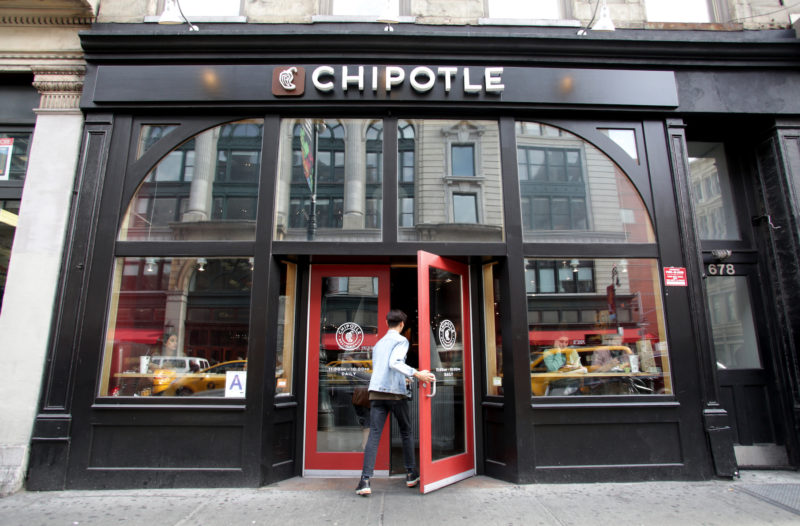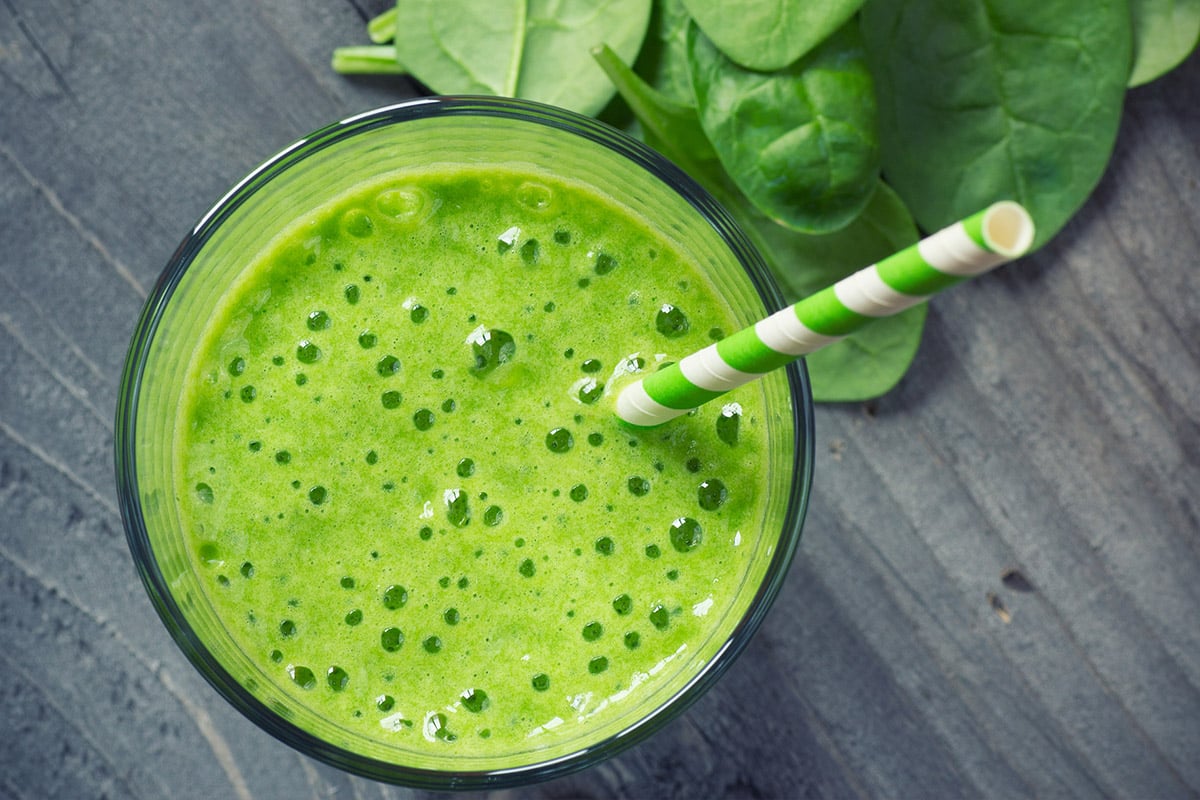In this ongoing series, we take a close look at restaurant chains across the country to help you find the most metabolically friendly options. Read on for guidance on how to maximize nutrition and maintain healthy blood sugar levels when dining out.
Depending on how you order, Chipotle can either be a metabolically healthy meal or a blood sugar disaster. No other fast-food option lets you pile on so many types of vegetables, mix in two kinds of fiber-rich beans, and top it all with hormone-free protein.
“With some careful ordering, Chipotle can be a smart choice for eating on the run, thanks to its customizable menu and above-average ingredient sourcing.”
However, Chipotle portions can be hefty and imbalanced. A large burrito stuffed with rice—even in combination with protein, fat, and veggies—may lead to significant glucose spikes. A typical chicken burrito with white rice has 1,325 calories and 151 grams of carbohydrates.
Thankfully, you are in control. With some careful ordering, Chipotle can be a smart choice for eating on the run, thanks to its customizable menu items and above-average ingredient sourcing.
The Metabolic Dangers at Chipotle
The challenges at Chipotle begin the minute you start your order: burrito or burrito bowl? Translation: refined carbs from a tortilla and rice, or refined carbs from just rice? Let’s compare.
Chipotle says that their flour tortillas are made with “wheat flour.” While this may sound healthy, it’s not. This flour is processed, which removes some of the fiber, protein, and health-boosting vitamins and minerals. Without maximizing all of that, wheat flour is predominantly a blood-glucose-boosting carb.
It’s the same story with the cilantro-lime white rice: Rice becomes white once you strip away its germ and bran, leaving only the starchy endosperm—the sugary center of a grain of rice. One small study found that when eaten as part of a meal containing vegetables and protein—such as a burrito or bowl—rice and wheat cause similar glycemic responses.
Chipotle also offers brown rice. Because the bran and germ of the rice kernel are not washed away, brown rice has more fiber. In a small study of people with Type 2 diabetes who regularly ate white rice, switching to brown rice improved overall blood sugar levels. And in a large population study, people who ate at least two servings of brown rice each month had lower incidences of Type 2 diabetes than those who never ate brown rice. Still, brown rice has a higher glycemic index score than pasta’s, and eating large portions of “more nutritious” carbs like brown rice and sweet potatoes can cause some people’s blood glucose levels to spike into non-optimal ranges. So it’s not always a healthy choice.
Beyond the base ingredients lies one more potential blood sugar booster. Watch for the corn salsa at the end. Technically corn is a whole grain, but many people see glucose spikes from it. So skip this topping.
Finally, we recommend passing on the big bag of chips. Although Chipotle’s tortilla chips are made with limited ingredients, and cornflour has slightly fewer carbs than white flour, it’s still a processed food likely to cause a blood sugar rise.
So is Chipotle healthy? The good news is that just about everything else on the Chipotle line will fit in your metabolically healthy meal. Below is a breakdown of how to optimize your order. If you want to make things easy, check out Chipotle’s “lifestyle bowls,” which you can order in one click on their app. The Whole30, keto, and paleo bowls should help keep glucose stable in most people.
10 Steps to a Healthier Chipotle Meal
1. Choose a salad instead of a burrito, taco, or bowl.
Ordering a salad starts your meal with Chipotle’s greens mix, which includes romaine lettuce, baby kale, and baby spinach. Or you can request just romaine for a crunchier base that holds up better underneath the toppings. Either way, this choice may offer metabolic health benefits: eating an extra 1.15 servings of leafy greens per day was found to reduce the risk of Type 2 diabetes by 14 percent in one research review. This may be because the antioxidants in greens help fight oxidative stress. This damage to our cells can lead to metabolic dysfunction.
Amongst the Levels dataset of individuals logging Chipotle and monitoring their blood sugar response, a Chipotle burrito generates an average 30-37 mg/dL glucose rise, while a Chipotle keto salad bowl has an average rise of just 7 mg/dL!*
2. Say no to a tortilla or rice.
One exception: Cauliflower rice. For a limited time in 2021, Chipotle offered cauliflower rice at the start of their ordering line. When one Levels team member compared the glucose response of sushi made with white rice to cauliflower rice, the white rice meal spiked blood glucose more than six times higher than the cauliflower sushi did. This healthier option adds one more vegetable to your meal, so if Chipotle ever brings it back, ask for it. Otherwise, avoid the rice and tortillas.
3. Double the beans.
Fiber and protein-rich foods help keep blood sugar stable. Beans are also one of the best options for increasing dietary fiber intake. Diets high in fiber from beans and vegetables have been associated with having more gut bacteria that work with fiber to create short-chain fatty acids. That matters because these molecules have been linked to weight regulation and improved insulin sensitivity.
If you’re skipping rice, Chipotle will let you double the beans—either a double-serving of black or pinto or a mix of both. Just note that beans can cause glucose spikes in some people, so be mindful of how they affect you.
4. Ask for extra fajita vegetables.
Consuming more vegetables delivers fiber and essential micronutrients—bell peppers and tomatoes, in particular, are rich in vitamin C and antioxidants. A Chipotle salad can almost get you to five servings in a single meal—especially if you double up here.
5. Pick almost any protein.
While the recently introduced brisket doesn’t taste sweet, it’s tied with the vegetarian sofritas for the most sugar: Each will add five grams of sugar to your salad bowl. Any other protein option has little to no sugar.
Choosing one of the meat options to get in those grams of protein can help you meet your daily zinc requirement. If you’re deficient in this nutrient, you could be at higher risk for metabolic dysfunction. There may be a few reasons for this. First, our bodies need zinc to produce and use insulin, which helps regulate blood glucose levels. Second, zinc helps reduce circulating C-reactive protein (an indicator of inflammation) and the production of inflammatory cytokines. Over time, chronic inflammation is closely involved in the onset of diabetes.
6. Choose any salsas except corn.
A cup of cooked corn contains only 3.5 grams of fiber but almost 11 grams of starch and 7 grams of sugar. On the other hand, the other salsas, like the tomatillo green chili salsa, on Chipotle’s menu are great choices to add more non-starchy vegetables to your bowl. Get them all if you’re interested.
7. Cheese and sour cream: Your choice.
Neither of these options will make your salad less metabolically friendly, but if you’re worried about calories, going lighter on high-calorie sour cream can make a serious difference: The standard giant ladle of sour cream at Chipotle adds more than 100 calories to your meal, so portion sizes matter. There is also a lack of consensus about how dairy affects metabolic health (it may not spike glucose, but it does spike insulin). You can ask for it—or any other ingredient—to be applied “light” when you order online or in person.
8. Guac is extra. Say yes anyway.
Yes, guac is worth the extra charge: Healthy fats in their (mostly) whole-food form, like avocados in guacamole, have little effect on glucose and may even lower the glucose-spiking effects of carbs that you eat. Adding protein, fats, fiber, or more than one of these to carbohydrates is always a good idea when it comes to healthy eating.
9. Go for the extra lettuce.
The end of the line generally has crunchier romaine than the Supergreens blend at the start of it. Add it for more veggies and more texture.
10. Skip the salad dressing.
Hiding at the end of the line is one last metabolic danger: The Chipotle honey-lime vinaigrette has 12 grams of sugar in that little tub of dressing. Your bowl is already dressed with sour cream and multiple salsas—avoid the extra sugar from the dressing.
Your Metabolic Menu: Four Go-to Orders to Stay on Track for Your Metabolic Goals
Just about any salad order that skips the rice, tortilla, corn salsa, and salad dressing supports metabolic health and can be a healthy option. But these four orders can help you hit specific goals. Also, note that Chipotle has what it calls Lifestyle Bowls that fit diets like Keto, Paleo, or Vegetarian—just be sure to request the modifications above.
If you’re going for high protein and high fiber…
…order the Supergreens mix; fajita veggies; black and pinto beans; chicken, steak, or carnitas; fresh tomato salsa; medium and hot salsas; cheese; guacamole; sour cream; and lettuce.
If you’re trying Whole30…
…order the Supergreens mix; fajita vegetables; chicken, steak, or carnitas; pico de gallo; and guacamole.
If you’re vegan…
…order the Supergreens mix, double fajita vegetables, black beans as your plant-based protein, pico de gallo, and shredded romaine.
If you’re keto …
… order the Keto Bowl with the Supergreens mix, chicken or steak, salsa, cheese, and guac.
* The numbers here represent anonymous aggregate data based on Levels members’ food logs and CGM data. A Zone Score is a score of 1-10 based on the glucose peak and rise from baseline.






